In the ever-evolving world of digital marketing, email remains a cornerstone of customer engagement. Two prominent players in this arena, Campaign Monitor and Emma, offer robust solutions for businesses seeking to elevate their email marketing strategies. As companies strive to create more personalized and effective campaigns, understanding the nuances between these platforms becomes crucial.
This comparison delves into the strengths and weaknesses of Campaign Monitor and Emma, providing insights that can guide marketers in choosing the tool that best aligns with their specific needs. From automation capabilities to user interface design, we’ll explore the key features that set these platforms apart in the competitive email marketing software landscape.
Key Facts
- Campaign Monitor offers a more advanced automation suite compared to Emma, with powerful user journey customization.
- Emma excels in list segmentation and provides a more streamlined experience for users with basic design needs.
- Pricing is a significant differentiator, with Campaign Monitor starting at $12/month and Emma at $99/month for comparable features.
Unveiling the Strengths: Campaign Monitor vs Emma
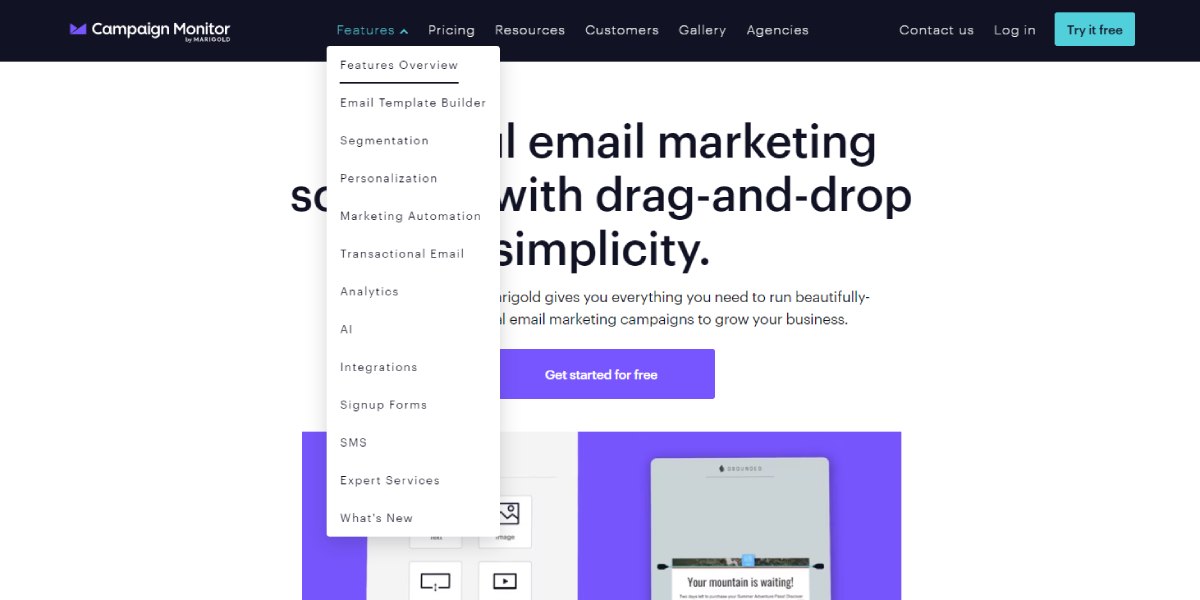
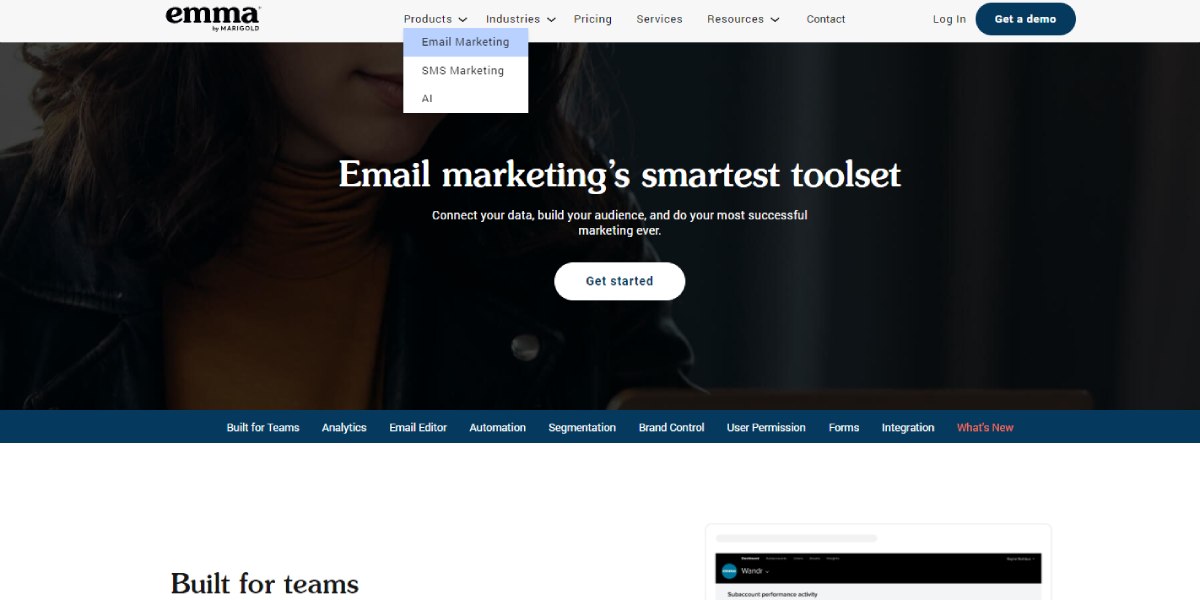
User Interface and Ease of Use
When it comes to ease of use, both platforms shine but in different ways. Campaign Monitor is lauded for its intuitive drag-and-drop interface, making it accessible for marketers of all skill levels. As one user on TrustRadius notes, “Campaign Monitor’s interface is so user-friendly, it’s like they’ve read our minds on what we need to create stunning emails quickly.” The platform’s design prioritizes user experience, allowing even beginners to create professional-looking emails with minimal training. This focus on accessibility extends to its mobile-responsive templates, which enable quick, on-brand email creation.
- Campaign Monitor Features:
- Intuitive drag-and-drop email builder
- Extensive library of mobile-responsive templates
- User-friendly interface for all skill levels
- Emma Features:
- Clean and straightforward interface
- Streamlined design options for simplicity
- Ease of editing mobile-friendly templates
Emma, while also user-friendly, takes a slightly different approach. Its interface is described as clean and straightforward, particularly appealing to those who prioritize simplicity over extensive customization options. A reviewer on SoftwareAdvice comments, “Emma’s simplicity is its strength. We can create professional-looking emails without getting bogged down in complex design processes.” Emma’s mobile-friendly templates are well-received for their ease of editing, though some users note a desire for additional flexibility in design.
Automation Capabilities and Personalization
Automation capabilities mark a significant point of divergence between the two platforms. Campaign Monitor’s automation suite is more sophisticated, offering intricate user journey mapping and behavior-based triggers. This level of detail allows for highly personalized communication strategies. The platform enables users to design custom journeys for subscribers based on their behaviors and actions, significantly saving time and increasing engagement through tailored communication.
Emma’s automation tools, while competent, are not as advanced. They cover essential tasks but may fall short for marketers seeking more complex automation scenarios. Emma does offer triggered emails based on user behavior and specific workflows, but its capabilities are generally considered less comprehensive than Campaign Monitor’s.
Both platforms provide dynamic content options, allowing for personalized emails at scale, but Campaign Monitor’s more advanced automation suite gives it an edge in creating highly tailored user experiences.
Analytics, Reporting, and Data Insights
In terms of analytics and reporting, Campaign Monitor takes the lead with its comprehensive suite of tools. It provides detailed insights into campaign performance, audience engagement, and even geographic data. This robust reporting capability is often utilized for quarterly performance tracking, offering marketers a deep understanding of their email campaigns‘ effectiveness.
Campaign Monitor’s analytics tools allow for advanced data interpretation, helping businesses make informed decisions about their email marketing strategies. Emma’s analytics, while covering key performance indicators, are described as more basic in comparison. Some users mentioned that while Emma’s reporting covers essential metrics, it lacks more detailed insights like in-depth geographic data.
- Campaign Monitor Analytics:
- Comprehensive campaign performance metrics
- Detailed audience engagement insights
- Geographic data analysis
- Emma Analytics:
- Essential performance metrics
- Basic engagement tracking
- Limited geographic insights
This difference could be crucial for businesses that rely heavily on data-driven decision-making in their marketing strategies. The depth and breadth of analytics offered by Campaign Monitor make it a stronger choice for marketers who prioritize comprehensive data analysis in their email marketing efforts.
Pricing Models and Value Proposition
Pricing is another area where these platforms diverge significantly. Campaign Monitor’s entry-level plan starts at a modest $12 per month, making it an attractive option for small businesses or those just starting with email marketing. This pricing structure includes core features and can scale up depending on the volume of emails and advanced features required.
- Campaign Monitor Pricing:
- Starts at $12/month
- Includes core email marketing features
- Scalable based on email volume and feature needs
- Emma Pricing:
- Starts at $99/month
- Offers premium features at a higher price point
- Positioned as a premium email marketing solution
The affordability of Campaign Monitor’s basic plan allows businesses to access professional email marketing tools without a significant initial investment. Emma, on the other hand, begins at $99 per month, positioning itself as a premium option. This higher price point includes features comparable to Campaign Monitor’s offerings but at a significantly higher cost.
The substantial price difference could be a deciding factor for budget-conscious marketers, especially when considering the feature sets offered at these price points. For businesses with limited marketing budgets, Campaign Monitor’s more accessible pricing structure may provide a better entry point into advanced email marketing capabilities.
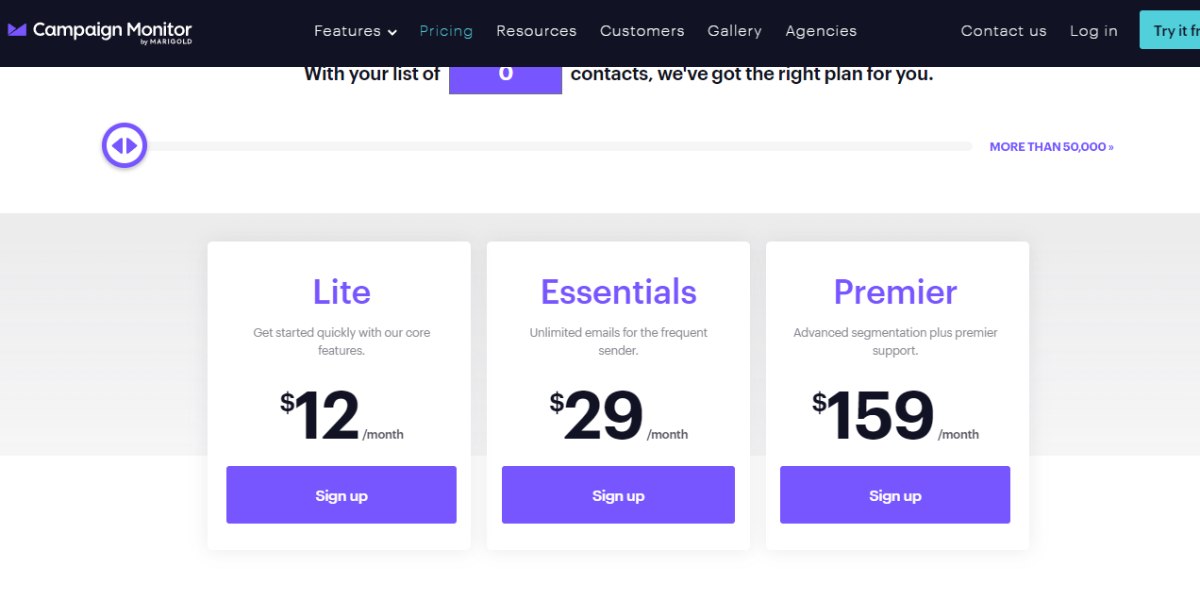
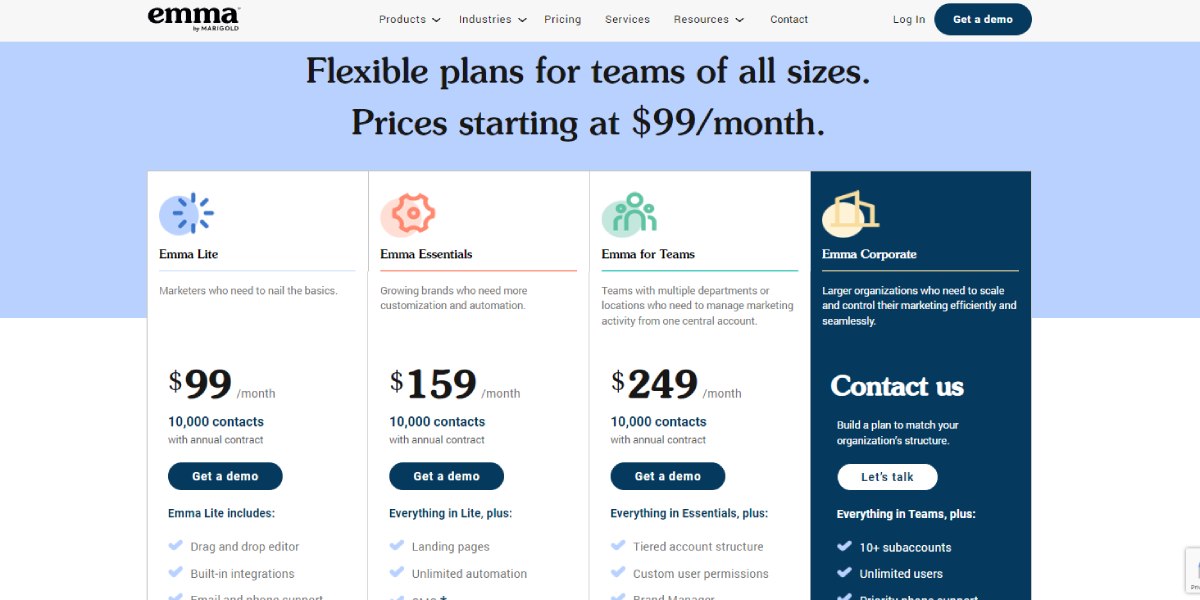
Integration of Hidden Gems
Beyond the standard features, both Campaign Monitor and Emma offer lesser-known strategies that can significantly enhance your email marketing effectiveness. Here, we integrate five such hidden gems into the comparison:
1. Utilize Advanced Segmentation for Targeted Campaigns
Both Campaign Monitor and Emma offer segmentation features, but leveraging advanced segmentation based on user behavior (like past purchases or engagement levels) can lead to highly personalized campaigns. This strategy allows you to send relevant content to specific audience segments, increasing open and click-through rates.
2. Implement Dynamic Content for Personalization
Using dynamic content within emails allows you to tailor messages based on subscriber data. For example, you can display different product recommendations in an email based on the recipient’s previous interactions with your brand. This level of personalization can significantly enhance engagement and conversion rates.
3. Leverage Automated Workflows for Re-engagement
Set up automated workflows in Emma to target inactive subscribers with tailored re-engagement campaigns. For instance, if a subscriber hasn’t opened your emails in a while, send them a special offer or a survey asking for feedback. This can help revive interest and reduce churn.
4. Use A/B Testing for Subject Lines and Content
Both platforms support A/B testing, but many users overlook the power of testing subject lines. Experiment with different styles (e.g., questions vs. statements) to determine what resonates best with your audience. This can lead to higher open rates and improved overall campaign performance.
5. Optimize Send Times Based on Audience Behavior
Analyze past campaign performance data in both platforms to identify optimal send times for different segments of your audience. By scheduling emails when your subscribers are most likely to engage, you can improve open rates and overall effectiveness.
Incorporating these hidden gems into your email marketing strategy can provide a significant edge, enhancing both the effectiveness and efficiency of your campaigns.
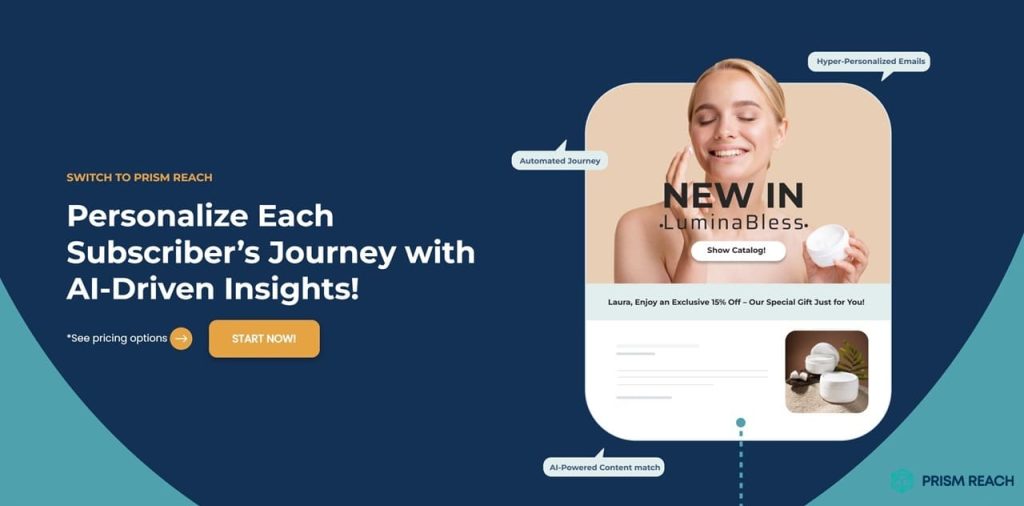
Innovative Solutions by Prism Reach
While Campaign Monitor and Emma offer solid email marketing solutions, the landscape is evolving rapidly with AI-driven innovations. Prism Reach emerges as a groundbreaking alternative that addresses some of the limitations found in traditional email marketing platforms. By leveraging advanced AI algorithms, Prism Reach takes personalization to new heights, potentially surpassing the capabilities of both Campaign Monitor and Emma.
- AI-Powered Personalization:
- Content Clustering: Utilizes both open and proprietary AI models to categorize content effectively.
- User Avatars: Enriches user data for creating highly personalized profiles.
- Personalized Introductions: Generates custom introduction paragraphs for each subscriber using advanced data analytics.
- Optimal Sending Times: Uses predictive analytics to determine the best times to send newsletters, maximizing subscriber engagement.
- Seamless Setup and Integration:
- Quick Setup: The platform can be integrated within 10 minutes, making it user-friendly.
- One-Click Uploads: Facilitates easy migration of existing subscriber lists.
- AI-Enhanced Sign-Up Forms: Designed to increase sign-up rates through AI-generated content tailored to the user’s context and improve GDPR compliance.
- Dynamic Content Selection: The AI determines the most relevant content for each subscriber, enhancing the personalization of each newsletter.
- Advertising Network and Swap Network:
- Provides a platform for targeted advertising similar to major online ad networks, allowing for precise ad placement based on subscriber data.
- Facilitates mutual promotion among publishers, broadening content reach and enhancing subscriber engagement.
- Advanced AI Features:
- Includes anti-spam checks and a focus on high deliverability, crucial for maintaining engagement levels and avoiding spam filters.
Prism Reach not only complements the functionalities offered by Campaign Monitor and Emma but also elevates your email marketing strategies by introducing AI-driven insights and automation that drive higher engagement and conversion rates.
Benefits of Prism Reach
- Enhanced Personalization: Tailors content to individual subscriber preferences, boosting engagement rates by up to 40%.
- Increased Revenue: Through targeted advertising and efficient content selection, Prism Reach helps monetize email campaigns more effectively.
- Improved Productivity: Automation and AI-driven insights reduce the time and effort required to create and manage email marketing campaigns.
Upgrade Your Email Marketing with AI Personalization!
Conclusion
In the comparison between Campaign Monitor and Emma, each platform offers distinct advantages. Campaign Monitor stands out for its advanced automation capabilities and comprehensive analytics, making it suitable for businesses seeking detailed control over their email marketing strategies. Emma, with its user-friendly interface and strong segmentation tools, appeals to those prioritizing simplicity and targeted communication.
However, the introduction of AI-driven solutions like Prism Reach signals a shift in the email marketing landscape. As businesses increasingly seek more personalized and efficient ways to connect with their audiences, platforms that leverage AI for deep personalization and predictive analytics may represent the future of email marketing.
Ultimately, the choice between Campaign Monitor, Emma, or an innovative solution like Prism Reach depends on specific business needs, budget constraints, and the desired level of personalization and automation in email marketing efforts. As the field continues to evolve, marketers would do well to stay informed about emerging technologies that could provide a competitive edge in their email marketing strategies.